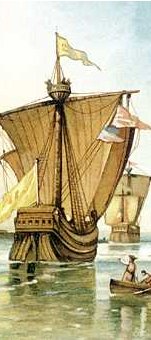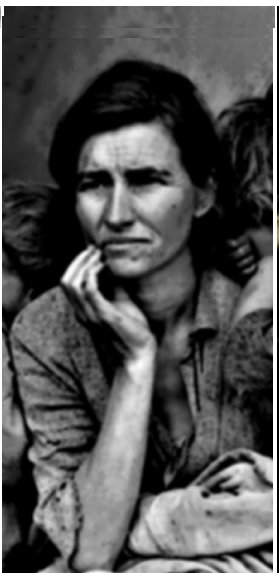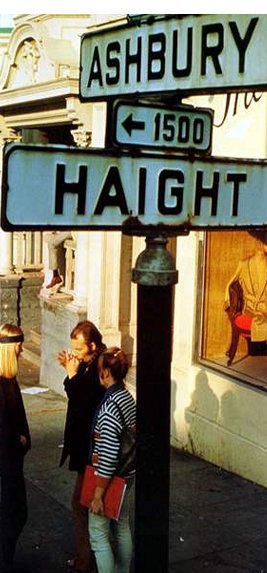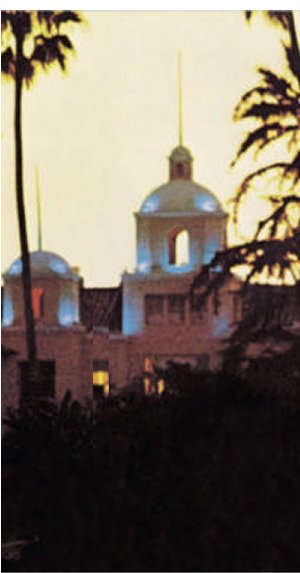America��s
Arsenal of democracy Angela Fu
Kevin Starr was born on September 3, 1940. He served in the U.S.
Army in West Germany
during the 1960s and attended the University
of San Francisco and Harvard
University.
Starr was California State Librarian from 1994 to 2004 and then received a National
Humanities Medal in 2006. He is currently a professor at the University
of Southern California but has taught or lectured at numerous universities
throughout California.
World War II changed the United
States as a whole, pulling the nation out of the Great Depression and turning
it into a world power, but the war had an especially great impact on the state
of California, which Kevin Starr makes a case for in Embattled Dreams, California in War and Peace 1940 �V 1950.
An influx of displaced Okies, Japanese, and other
minorities altered California��s
social structure in the 1930s, destabilizing its political system in the 1940s
and pushing the state towards the right of the political spectrum. Mobilizing
for war, the formerly agricultural California
industrialized to accommodate its new defense industry. The existing film
industry in Hollywood created
anti-Nazi propaganda and abandoned its isolationist message. The new California
was a product of the war and ��a direct creation of the national will,�� but at
the same time it helped shape the war and the postwar climate.1
Starr begins his analysis in 1940,
when isolationism was still strong in California,
and people partied and had fun as a way to ignore ugly realities. While the
Depression was by no means over, Californians enjoyed new luxuries and immersed
themselves in escapist radio programs and movies, loath to recognize signs of
escalation such as the Selective Service Act, the first peacetime draft.
Ambivalent towards politics, they accepted Franklin D. Roosevelt as president
but turned away from their Democratic governor Culbert
Olson, perhaps as a way of ��resisting Roosevelt��s
interventionism.�� 2 They were by no means ignorant of their danger,
however, and when the Japanese attacked Pearl Harbor,
the majority of the population reacted with fear and instant paranoia of a
mainland invasion. Japanese victory in the Russo-Japanese War led to the
Associated Anti-Japanese Leagues, Theodore Roosevelt��s Gentleman��s Agreement,
and the segregation of Japanese children in Californian schools in the early
twentieth century, decades before internment. California��s
blatant racism had been brewing for decades and erupted when Japanese Americans
had finally established themselves as normal, hardworking Americans who were an
important economic force.
After Californians accepted the
necessity of war, they became major contributors to the war effort. Californian
Major General George Patton trained soldiers for combat in North
Africa at the Desert Training
Center in Southern
California, Nevada,
and Arizona. The Navy and Marines
established their presence in San Diego,
Long Beach, and San
Francisco, and numerous training centers, bases, and
ports of embarkation shuttled servicemen to war in the Pacific. Due to the
young age of many soldiers, military life inevitably joined with college life,
and soldiers in the Bay Area were able to attend co-ed dances with students
from UC Berkeley or find other entertainment in
lively San Francisco. For all the
partying, servicemen realized that they might not return from war, and this led
to the Los Angeles Zoot Suit Riots in June 1943,
where sailors attacked young Mexican American men, perhaps out of jealously of
the self-expression that men free from military service could indulge in. The
Mexican government, an ally to the U.S., instantly protested, and Eleanor
Roosevelt compared the ��race riot against Mexicans�� to the ��riots against
blacks in Detroit,�� but strangely enough, no one was hurt in the Zoot Suit Riots which had a carnival-like atmostphere.3 After the removal of Japanese
Americans along the Pacific Coast to inland internment camps by Executive Order
9102, Californians who often linked whiteness to loyalty naturally targeted
Hispanics, but they also discriminated against blacks who moved for employment
in the defense industries. Ironically, discrimination occurred to a lesser
extent within the military, and Mexican Americans and Japanese Americans were
both highly decorated ethnic groups, greatly honored for their service to a
nation that rejected them. With so many men overseas, defense industries turned
to women for labor out of necessity, providing conveniences such as day-cares
and cafeterias and introducing ergonomics to adapt machinery to women��s
physical limits. As many young women moved to the Coast hoping for a shot at Hollywood,
aviation became the most glamorous defense industry, highlighted by the fact
that Charles Lindbergh��s Spirit of Saint
Louis was built in San Diego.
Before the war ended, developments already pointed at a prosperous postwar
environment, and Los Angeles began
meeting the housing shortage with middle-class dwellings. The American dream of
a car and a home in the suburbs seemed to become a reality in California,
now industrialized and independent of the East Coast.
Starr makes constant reference to Hollywood,
and he devotes chapter six to the role of stars and the film industry in the
war. Bob Hope became Hollywood��s
main spokesman for the war, and Bette Davis organized the Hollywood Canteen
where servicemen could meet actors and actresses. Although the rich and famous
tried to throw themselves one hundred percent behind the war effort, the public
became disenchanted with propaganda films by 1944, including Hollywood Canteen where stars
condescended to mingle with soldiers, and resented the war of privilege where
actors and producers automatically received safe officer positions. In total
26,000 Californians died in the war, but hundreds of thousands of veterans
settled in California, including
those who fell in love with the freewheeling atmosphere of the hospitable Bay
Area. The Servicemen��s Readjustment Act of 1944, better known as the GI Bill of
Rights, gave health care, home loans, unemployment insurance, education, and
more to veterans so that in 1946, more than half of the students at USC were veterans, and 43% at UCLA in 1947 were as well.4 Many veterans settled comfortably in the
suburbs, buying simple massed-produced houses, but behind the veil of
contentment, people were still uneasy about the rise in youth delinquency due
to the absence of parents and the rise of organized crime. One Elizabeth Short,
nicknamed the Black Dahlia after a dark film by Raymond Chandler, was found
mutilated in LA in 1947, just one of the many murders that the public became
immune to. Starr uses her case in chapter eight to emphasize the anonymity and
cruelty of life in the big cities, where mobsters became respected figures and
intellectuals lamented the fakeness and grimness of life.
Representative of the
contradictions in California,
three-term governor Earl Warren was a family man who showed off his photogenic
Kennedy-like family, but at the same time he was a hardened prosecutor and
crime fighter. Warren was a
professed Republican, but due to the practice of cross-filing where a candidate
can enter both party primaries regardless of his own political beliefs, in a
way he was a unified Party of One. Using mass media to widen his campaigns, he
reached individuals in a nonpartisan way, attracting minorities and unions,
imitating Roosevelt��s New Deal, and creating his own
brand of progressivism. In chapter ten, Starr discusses conservative
conservatives involved in the anti-Communist crusade. The House Un-American
Activities Committee attacked Hollywood
for its Communist affiliations, and the Tenney
Committee led by Senator John Tenney accused the UC system of being too sympathetic to Communism. Richard
Nixon of Southern California brought down the ��pink
lady�� Helen Gahagan Douglas. The Communist Party in
California was very open and produced optimistic literature anticipating the
civil rights movement of the 1960s, but the state as a whole veered sharply to
the right in light of the Cold War, though not one of the seven hundred
individuals blacklisted by Tenney was so much as
indicted because he carelessly named prominent Californians and made
unreasonable accusations. 5 Starr concludes the eleventh and final
chapter on a hopeful note by mentioning Warren
again, who was appointed Chief Justice of the Supreme Court by President Dwight
D. Eisenhower. One of the most liberal Justices in history, Warren
presided over Brown v. Board of Education
in 1954 and Miranda v. Arizona in
1966, causing Republican Eisenhower to regret the appointment. However, Warren
helped reverse the illogical hysteria in California
and the nation that accompanied the end of World War II which he at one time
had contributed to.
Though he often appears to digress,
Starr��s tangents actually relate closely to his thesis that not only was California
changed by the war, it also shaped the war and people��s perception of the war.
Starr analyzes California in
relation to the world and doesn��t isolate events from their time period in an
effort to show cause-and-effect relationships. He mentions California��s
effects on foreign policy, such as the embarrassment the state brought on the
nation by its racism and its role in escalating the war, claiming that ��the
White California crusade had poisoned the well between Japan
and the United States��
and perhaps led to Pearl Harbor. 6 Listing
important figures from California
such as Patton, Hearst, Nixon, and Warren and many others associated with Hollywood,
Starr backs up his claim that the Golden
State��s influence on the entire
nation was proportional to its great size. Ultimately, he shows how California
reflected the American dream despite some of its less memorable aspects.
Throughout the book, Starr makes it
clear that he is a New Left historian, concerned with racism, women��s rights,
and the repressiveness of anti-Communist sentiment. Born 1940 in San
Francisco, Starr was California State Librarian and is
currently Professor of History at USC, partially
explaining his preoccupation with developments in colleges. He served as a
lieutenant in West Germany
around the time of the Vietnam War and has authored six books in his series, Americans and the California Dream,
dealing with California in
different time periods from 1850 to 1950. With clear knowledge of Californian
history, he often makes reference to events outside the time range of World War
II that still contribute to his narrative. Very sympathetic to the plight of
minorities, Starr attempts to be impartial but does evaluate some events from
his personal point of view, calling the deportation of Japanese Americans ��one
of the most egregious violations of civil rights in American history.�� 7 He
mildly censures HUAC and government reactions to mass
hysteria, sharing the disillusionment of most Americans today.
Embattled Dreams received
relatively favorable reviews from critics including Benjamin Schwarz. Schwarz
notes that Starr ��covers such disparate subjects�� and ��stresses continuities,
rather than abrupt change.�� 8 He congratulates Starr��s understanding
of The Folks and his emphasis on Earl Warren, but he feels that the absence of
any mention of Billy Graham��s influence on religion in California
is inexcusable. Eric Schine delivers a glowing review
emphasizing Starr��s summary of the social revolution in California.
Though he feels that ��Starr sometimes overindulges�� with detailed anecdotes,
��such brief lapses are a small price to pay�� since Starr more than adequately
analyzes California��s role in the
American experience. 9 Though each reviewer finds a small flaw in
the book, both feel that it is a worthwhile read that accurately sums up
Californian influence during World War II.
Starr is quite the master at
blowing up a small detail so that it represents an entire aspect of Californian
culture. Each of his chapters takes its name from an anecdote; chapter nine
��Honey Bear,�� for example, is the nickname of Warren��s
youngest daughter and as a chapter name refers to Warren��s
use of his family in the media as ��the very emblem and spirit of California.��
10 Although such connections may be a bit of a stretch, the chapter
titles reflect the content and anecdotes in those chapters and show how Starr
can build an argument from the most insignificant of events. As Schine notices, these little stories sometimes become too
long and beside the point, but the use of cultural references and descriptions
of individuals lend credibility to Starr��s thesis and add a dash of color to a
history book, though several biographies could have been made more concise.
Starr could have made greater reference to World War II and put less emphasis
on Hollywood, but as the title
suggests, he analyzes the entire decade and looks at history as an ongoing
process, where to ignore one point of view is to lose focus of the subject.
Starr��s emphasis is the pervasive
influence of California on the
rest of the nation, and he makes short shrift of the East Coast��s effect on the
West, only saying that the war made California
industrialized and independent, implying that agricultural California
had depended on the East for manufactured goods. The only ways the East has an
impact of California, according to Starr, is through the national government in
Washington, D.C. Franklin Roosevelt issued several Executive Orders for
Japanese internment and fair employment practices, and in 1950 the California
National Guard of ten thousand men was ��called to active duty and
nationalized�� for ��the global
conflict with Communism.�� 11 HUAC also
affected California in its
persecution of stars such as the Hollywood Ten and the pressure it placed on
the UC Regents to create a loyalty oath for its
faculty. The migration of Okies and blacks to California
from the East and Midwest for work in the defense
industries changed the social and economic structure prior to World War II. In
a way, the East thus made California
distinctive from the rest of the country by creating a fluid society of
vagrants, and the return of veterans increased the population and worsened the
housing and transportation crises which still exist today. Before the war,
Californians would have been content staying in agriculture, but
industrialization and the social revolution that accompanied it changed
people��s aspirations and expectations.
As the mainland state most
vulnerable to Japanese attack, California
served as the largest homeland military base for the U.S.
In February 1942 ��Commander [Kozo] Nishino and his submarine were capable
of�Kthe shelling, strafing, and torpedoing of [the] American city�� Santa Barbara.12 California was certainly in the most
danger, and its large population of Japanese Americans heightened anti-Japanese
and generally xenophobic sentiment that affected foreign policy and hurt the
reputation of the United States in the eyes of its allies. The Sunshine
State produced Nixon, one of the
leaders in the anti-Communist movement, but at the same time it was a favorite
target of HUAC. Physically protecting the nation by
building aircrafts, ships, and weapons and training soldiers, California
also provided a morale boost by being the nation��s propaganda center. No other
state had such a great part in determining national culture and the outcome of
the war, and no other state so perfectly embodied the American dream.
Events
in the East had some effect on the West, but ultimately lifestyle changes in California
created disproportionate changes for the nation as a whole. World War II was
perhaps ��an intensification of prior developments rather than a beginning��: the
Great Depression brought the Okies to California and
the war merely led to their assimilation, Californians generally already hated
the Japanese as inassimilable economic competitors and the war was an excuse to
remove a longtime enemy. 13 The defense industry modernized
California and altered the nature of its economy and its relationship with the
East, and the people it attracted disrupted the more liberal political
institutions, allowing the rise of zealous opponents to Communism just as
Governor Warren was introducing socialist policies. Hollywood came to be a
channel of expression for Americans and a representative for the war. The war
changed California beyond
recognition, but one role it could not change was that of the final destination
of Manifest Destiny, the promised land where Americans
had the best chance of finding the perfect, idyllic life.
1. Starr, Kevin. Embattled Dreams, California
in War and Peace 1940 �V 1950. New York:
Oxford University
Press, 2002. ix.
2. Starr, Kevin. 24.
3. Starr, Kevin. 111.
4. Starr, Kevin. 191.
5. Starr, Kevin. 307
6. Starr, Kevin. 37.
7. Starr, Kevin. 37.
8. Schwarz, Benjamin. ��California Transformed.�� Atlantic Monthly May 2002. 01 June 2008
< http://www.theatlantic.com/doc/200205/schwarz>.
9. Schine,
Eric. ��When California Came of Age.�� BusinessWeek 13 May
2002. 01
June 2008
<http://www.businessweek.com/magazine/content/02_19/b3782037.htm>.
10. Starr, Kevin. 241.
11. Starr, Kevin. 308-309.
12. Starr, Kevin. 35.
13. Starr, Kevin. vii.





















